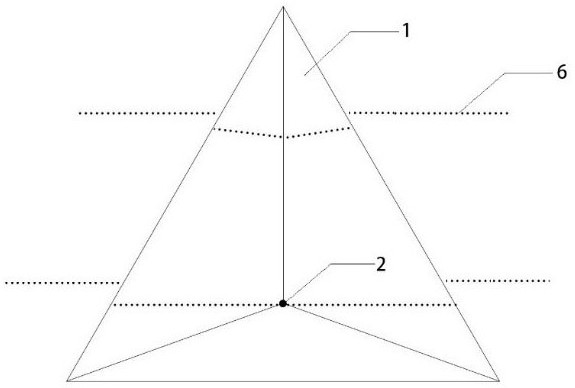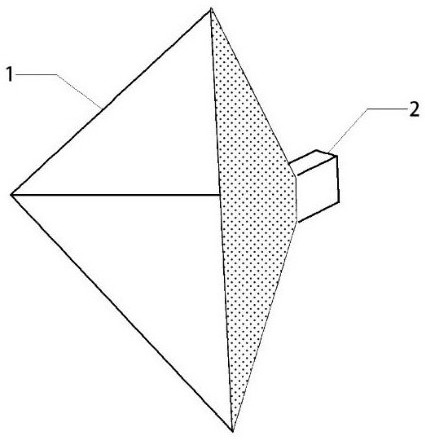Laser radar and millimeter wave radar combined calibration method
A millimeter-wave radar and lidar technology, applied in radio wave measurement systems, instruments, etc., can solve problems such as being unsuitable for large-scale deployment or mass production, unstable in effect, and reducing calibration efficiency.
- Summary
- Abstract
- Description
- Claims
- Application Information
AI Technical Summary
Problems solved by technology
Method used
Image
Examples
Embodiment
[0021] In this example, if Figure 1-3 As shown, the laser radar 4 and the millimeter-wave radar 5 are fixedly installed at predetermined positions of the electric vehicle, and the relative position between them is fixed, and a corner reflector 1 that can move vertically in space is installed within the sensing range of the millimeter-wave radar 5 , the photosensitive unit 2 for receiving the infrared light 6 emitted by the laser radar 5 is installed at the apex of the corner reflector 1 .
[0022] Among them, the corner reflector 1 can form a strong reflection point within the sensing range of the 24GHz or 77GHz millimeter-wave radar. The corner reflector specification needs to be greater than 0db and less than 20db, and it is best to use a 10db corner reflector. The photosensitive unit 2 can receive the infrared light 6 emitted by the laser radar 4 , such as 905nm or 1550nm. The photosensitive unit may be a point photosensitive unit, a column photosensitive unit or a surfac...
PUM
 Login to View More
Login to View More Abstract
Description
Claims
Application Information
 Login to View More
Login to View More - R&D
- Intellectual Property
- Life Sciences
- Materials
- Tech Scout
- Unparalleled Data Quality
- Higher Quality Content
- 60% Fewer Hallucinations
Browse by: Latest US Patents, China's latest patents, Technical Efficacy Thesaurus, Application Domain, Technology Topic, Popular Technical Reports.
© 2025 PatSnap. All rights reserved.Legal|Privacy policy|Modern Slavery Act Transparency Statement|Sitemap|About US| Contact US: help@patsnap.com



